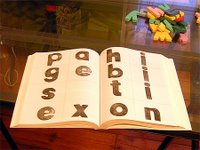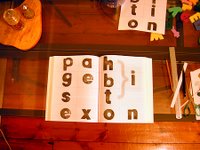Katrina Anderson
Pages Project Proposal
Abstract
It has been described as a "tame longing without any particular object" by Schopenhauer, "a bestial and indefinable affliction" by Dostoevsky, and "time's invasion of your world system" by Joseph Brodsky, but still very few of us today can explain precisely what boredom is. However, boredom is a defining feature of the modern age and avoiding it has become an obsession. The world’s boredom threshold has never been lower and eluding boredom has become a moral imperative, a multi-billion pound industry. Thus, boredom becomes both a ‘democratic affliction’ and a great leveller, bound up with changing definitions of work and leisure, art and mass culture, aesthetics and sexual difference” (Petro 192). Throughout history artists, writers and poets have wrestled with the subject of boredom, for example, Beckett endlessly waiting for Godot. Boredom was a status symbol, and even today a declaration that one is bored lends a fake air of sophistication. Many feminist writers today believe that we are suffering from a post-feminist ennui and argue for the reclamation of feminism from a “post-feminism” that is unable to offer representational life to the concept and experience of boredom.
Aims and Objectives
To conduct research on women artists, writers, etc, whose work has been influenced by concepts of boredom. The research will encompass many ways of researching information, for example, bibliographical research, abstracts, archives and manuscripts, literature reviews, journals and newsgroup archives, directories, indexes and periodicals, newspaper articles, as well as, information from other libraries, organisations and artists.
To pay particular attention to audience participation and audience selection/focus in the artists work.
To research across disciplines and develop a flexible and innovative approach to the research apparatus.
To develop and design a database of all potential artists for the pages exhibition, with information regarding where they are based and their contact information, etc.
To have a comprehensive list of artists/contacts at the end of the research project.
Research Questions
What do we already know in the immediate area concerned?
Who are the artists already known?
What are the inconsistencies or other shortcomings of this information?
What views need to be (further) tested?
Who are the artists as yet unknown?
What evidence is lacking, inconclusive, contradictory or too limited?
What contribution can the present information be expected to make?
Is this information satisfactory?
Provisional Timeframe
October
Begin literature reviews and researching the subject area. Examine the collection at the Women’s Library.
November
Start expanding research techniques, using archives and manuscripts. Search the internet for local and international artists. Use international library databases. Begin compiling and designing a database of potential artists and artists contacts.
December
Develop contact database. Attend appropriate art events to develop contacts and research appropriate archive material, newspaper articles etc.
January
Research local directories and if need attend local art events, for example, Nottingham. Make contact with artists working in Warsaw. Make contact with other artists.
February
Develop contacts with artists groups and organisations. Review existing research so far, paying attention to areas for improvement.
March
Research will be specific and database will be comprehensive. Continue grappling with ideas about boredom and maybe conduct ethnographic research on audience participation on selected artists work.
April
Begin ‘cutting the corners’ of the research.
May
Developed a comprehensive list of women artists, writers etc, with full contact information/history. Achieved the aims and objectives of the project proposal.
Research Thus Far
I have been researching the work of the playwright Sarah Kane, sculptors Susan Collis and Ruth Claxton as well as artists working in Vienna and Prague. Both cities appear to be a fruitful line of research on this subject and the bursary may allow me to investigate further. I also intend to visit the North-East to research local artists.









